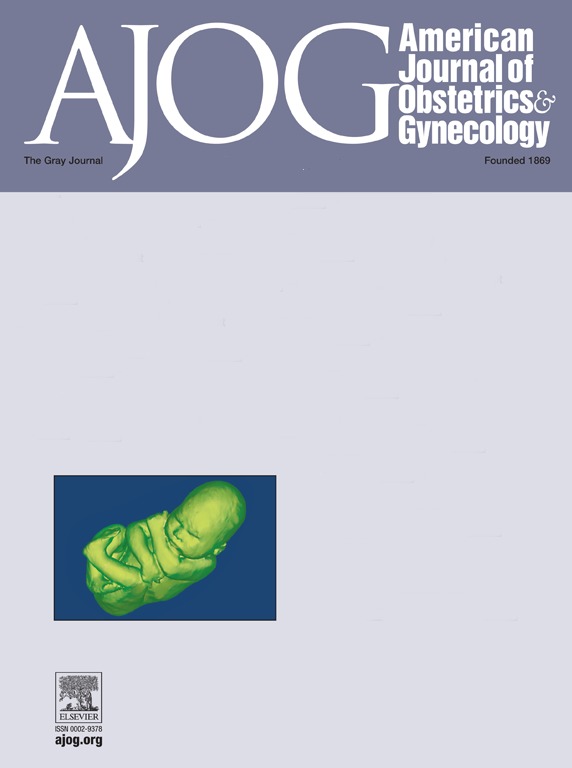硫酸镁预防子痫前期癫痫发作:起源、实验基础、临床研究和产科实践的演变。
IF 8.4
1区 医学
Q1 OBSTETRICS & GYNECOLOGY
引用次数: 0
摘要
几个世纪以来,人们一直在描述怀孕时特有的抽搐。在这段时间里,从放血到麻醉药等各种治疗方法都被建议作为治疗子痫的选择。在发现镁盐可以控制破伤风引起的惊厥后,硫酸镁成为治疗子痫的建议。在整个20世纪,几项大型临床试验证实硫酸镁是治疗子痫的首选。本文介绍了子痫的治疗史和硫酸镁的研究情况。该报告的目的是强调使用硫酸镁的主要临床特征,目前对作用机制的理解,以及将硫酸镁作为目前确定的预防和治疗子痫的研究的严谨性。由于硫酸镁独特的药理学特性,产科医生了解基础研究以确定剂量和确定硫酸镁应用的风险至关重要。此外,硫酸镁管理的所谓假定的影响,如延长劳动时间,也解决了。最后,鉴于子痫前期的不同定义,总结了使用硫酸镁预防子痫的挑战。本报告作为一个编年史总结的故事,如何最常用的药物之一,在产科成为当今的标准护理。本文章由计算机程序翻译,如有差异,请以英文原文为准。
Magnesium sulfate for the prevention of seizures in preeclampsia: origin, experimental basis, clinical studies, and the evolution in obstetrical practice.
For centuries, convulsions unique to pregnancy have been described. In this time, varying therapies-from phlebotomy to narcotics-have been suggested as the treatment of choice for eclampsia. Building upon the discovery of magnesium salts to control convulsions due to tetanus, magnesium sulfate became a suggested treatment for eclampsia. Throughout the 20th century, several large, clinical trials verified magnesium sulfate as the treatment of choice for eclampsia. In this report, the history of eclampsia management and the study of magnesium sulfate are described. The intent of the report is to highlight the key clinical features with use of magnesium sulfate, the present understanding of the mechanism of action, and the rigor of the studies by which it was established as the current definitive prophylaxis and therapy for eclampsia. Because of the unique pharmacologic properties, it is critical that obstetric providers understand the foundational studies to establish dosing and identified risks with magnesium sulfate application. Additionally, alleged putative effects of magnesium sulfate administration, such as prolongation of labor, are also addressed. Lastly, the challenges with use of magnesium sulfate in the prevention of eclampsia is summarized given the varying definitions of preeclampsia. This report serves as a chronicle to summarize the story of how one of the most commonly utilized agents in obstetrics became the standard of present-day care.
求助全文
通过发布文献求助,成功后即可免费获取论文全文。
去求助
来源期刊
CiteScore
15.90
自引率
7.10%
发文量
2237
审稿时长
47 days
期刊介绍:
The American Journal of Obstetrics and Gynecology, known as "The Gray Journal," covers the entire spectrum of Obstetrics and Gynecology. It aims to publish original research (clinical and translational), reviews, opinions, video clips, podcasts, and interviews that contribute to understanding health and disease and have the potential to impact the practice of women's healthcare.
Focus Areas:
Diagnosis, Treatment, Prediction, and Prevention: The journal focuses on research related to the diagnosis, treatment, prediction, and prevention of obstetrical and gynecological disorders.
Biology of Reproduction: AJOG publishes work on the biology of reproduction, including studies on reproductive physiology and mechanisms of obstetrical and gynecological diseases.
Content Types:
Original Research: Clinical and translational research articles.
Reviews: Comprehensive reviews providing insights into various aspects of obstetrics and gynecology.
Opinions: Perspectives and opinions on important topics in the field.
Multimedia Content: Video clips, podcasts, and interviews.
Peer Review Process:
All submissions undergo a rigorous peer review process to ensure quality and relevance to the field of obstetrics and gynecology.

 求助内容:
求助内容: 应助结果提醒方式:
应助结果提醒方式:


